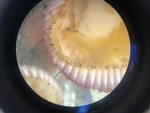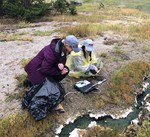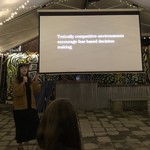Samantha Gilbert (she/her/hers)
PhD student in Astronomy/Astrobiology
University of Washington
Samantha Gilbert
I am a PhD student in Astronomy and Astrobiology at the University of Washington. As a member of the Virtual Planetary Laboratory, I am exploring how we will interpret spectral observations of terrestrial exoplanets with future instruments. In preparation for upcoming transmission or direct imaging missions, I am particularly interested in developing robust frameworks for interpreting the detection of biosignature gases.
In my spare time, I enjoy combing Seattle for tostones and maduros with my partner Joe and our dog Toby.
Education
-
Dual Title PhD in Astronomy & Astrobiology
University of Washington
-
BA in Physics with a Specialization in Astrophysics, 2017
University of Chicago



